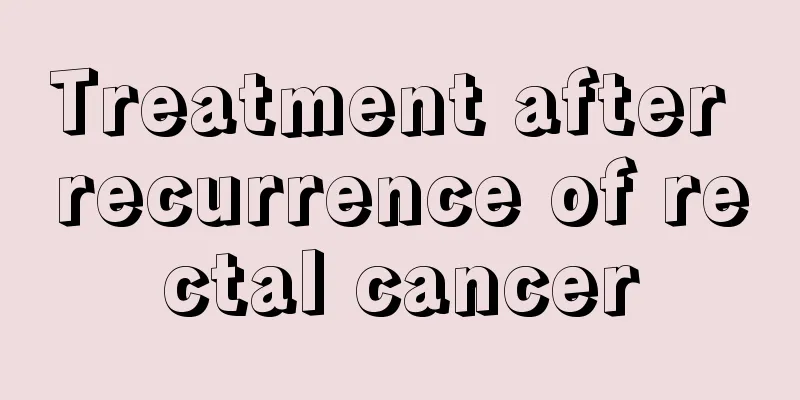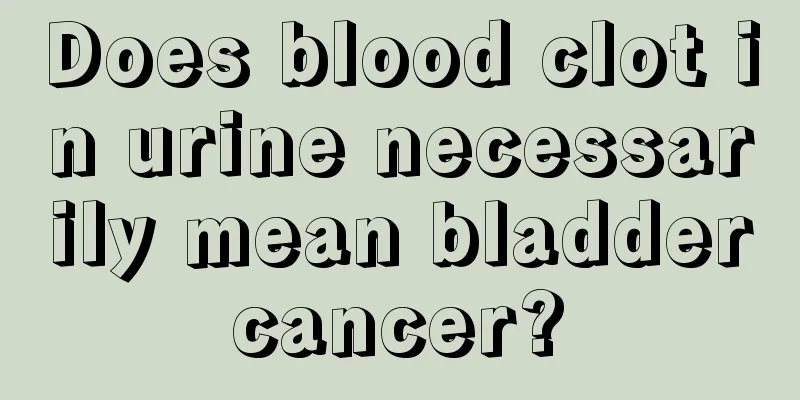Does a 6cm renal hamartoma require surgery? How big a renal hamartoma requires surgery?

|
Renal hamartoma is composed of abnormally proliferating and degenerating blood vessels, smooth muscles and fat in different proportions. Generally speaking, surgery can be performed when the diameter of a renal hamartoma is greater than 4cm, so surgery is required when the renal hamartoma is 6cm. If the tumor diameter is less than 4cm, but the tumor's growth location and development are not optimistic, and the hidden dangers are great, this also needs surgery as soon as possible. Renal hamartoma is a benign tumor, so if it is treated promptly and properly, the prognosis is good and it will not have a big impact on daily life. The size of the tumor is an important basis for doctors to determine whether surgery is needed. After surgical resection, it can be cured and is not prone to recurrence. So does a 6cm renal hamartoma require surgery? How big a renal hamartoma requires surgery? 1. When a renal hamartoma grows to 6 cm, surgery is required. The appropriate surgical plan is selected based on the development of the tumor, such as whether it compresses surrounding organs, whether there is a risk of rupture and bleeding, and the physical condition. Resection as soon as possible is also conducive to postoperative recovery. Treatment principles Tumors <4 cm are not treated; giant renal hamartomas may be treated with nephrectomy. Treatment strategy Tumors <4 cm may not require treatment, but close follow-up is required. Tumors <5 cm may require enucleation; giant renal hamartomas may require nephrectomy. Surgery 1. Nephron-sparing surgery Tumors <5 cm can be enucleated, especially those at the edge of the kidney. For cases with smaller tumors, laparoscopic nephron-sparing partial nephrectomy (LpN) is an effective surgical treatment. 2. Nephrectomy Giant renal hamartomas can be treated with partial or complete nephrectomy. If the disease is bilateral, more consideration should be given to the preservation of renal function. In a few cases, there may be local and lymph node invasion, or even tumor thrombus invasion of large veins, showing malignant behavior, and radical nephrectomy should be performed. Other treatments 1. Embolism Arterial embolization should first be considered in cases of bleeding. According to experience, the volume of the tumor does not decrease after embolization, but the bleeding can be stopped. Superselective renal artery branch embolization is often used to protect some renal function. 2. Kidney transplantation or hemodialysis It is only suitable for patients who must undergo bilateral nephrectomy due to bilateral lesions leading to renal failure or tumor rupture and bleeding. Prognosis Unilateral renal hamartoma is a benign lesion with a good prognosis. Bilateral, multiple lesions and renal insufficiency still affect the quality of life despite conservative treatment. In a few cases where multiple organs are invaded, such as lymph nodes, brain, heart, or even blood vessels, the prognosis depends on the degree and range of the invaded organs. |
>>: What are the main causes of renal hamartoma
Recommend
Six summer tips to fight air-conditioning disease
It is a very pleasant thing to work, study and ch...
Preoperative preparation for laparoscopic rectal cancer surgery
Laparoscopic rectal cancer surgery can relieve pa...
Drugs for treating gastric cancer
Drugs for stomach cancer 1. Targeted drugs for th...
How to treat a baby’s viral infection and fever?
Everyone knows that babies’ immune abilities are ...
Is cervical spondylosis serious? Treatment is urgent
We should be aware of the dangers of cervical spo...
Is Chinese medicine useful for treating laryngeal cancer?
There are many ways to treat laryngeal cancer, in...
Does a hair straightener damage hair?
Nowadays, people have access to more and more too...
How to treat hand joint rheumatism
Everyone is familiar with rheumatism. Rheumatism ...
Does bladder cancer run in the family?
Many cancer patients are most worried about wheth...
How to get rid of bad breath
There are inevitably some embarrassing things in ...
Pityriasis rosea dry skin wrinkles
Spring is a high-risk period for the growth of ba...
What are the benefits of sweatpants
Nowadays, many male friends have some health prob...
How to use an electric oven
Many families like to use electric ovens, especia...
Can avoiding estrogen prevent breast cancer? The 6 best ways to treat breast cancer
Breast cancer is a common malignant tumor in wome...
What else should you pay attention to after strenuous exercise in summer
After strenuous exercise in the summer, you must ...









